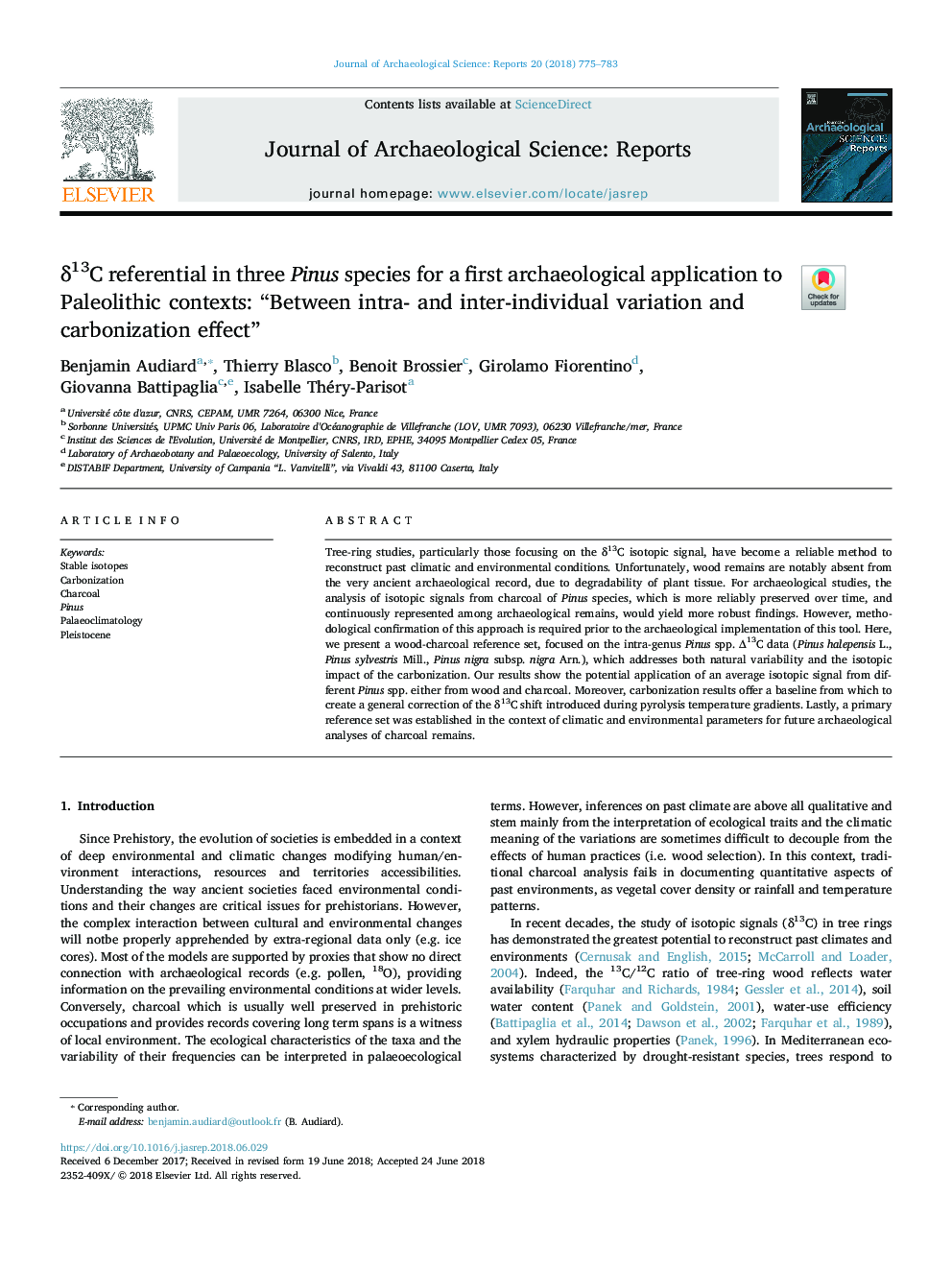| Article ID | Journal | Published Year | Pages | File Type |
|---|---|---|---|---|
| 7444699 | Journal of Archaeological Science: Reports | 2018 | 9 Pages |
Abstract
Tree-ring studies, particularly those focusing on the δ13C isotopic signal, have become a reliable method to reconstruct past climatic and environmental conditions. Unfortunately, wood remains are notably absent from the very ancient archaeological record, due to degradability of plant tissue. For archaeological studies, the analysis of isotopic signals from charcoal of Pinus species, which is more reliably preserved over time, and continuously represented among archaeological remains, would yield more robust findings. However, methodological confirmation of this approach is required prior to the archaeological implementation of this tool. Here, we present a wood-charcoal reference set, focused on the intra-genus Pinus spp. Î13C data (Pinus halepensis L., Pinus sylvestris Mill., Pinus nigra subsp. nigra Arn.), which addresses both natural variability and the isotopic impact of the carbonization. Our results show the potential application of an average isotopic signal from different Pinus spp. either from wood and charcoal. Moreover, carbonization results offer a baseline from which to create a general correction of the δ13C shift introduced during pyrolysis temperature gradients. Lastly, a primary reference set was established in the context of climatic and environmental parameters for future archaeological analyses of charcoal remains.
Related Topics
Social Sciences and Humanities
Arts and Humanities
History
Authors
Benjamin Audiard, Thierry Blasco, Benoit Brossier, Girolamo Fiorentino, Giovanna Battipaglia, Isabelle Théry-Parisot,
